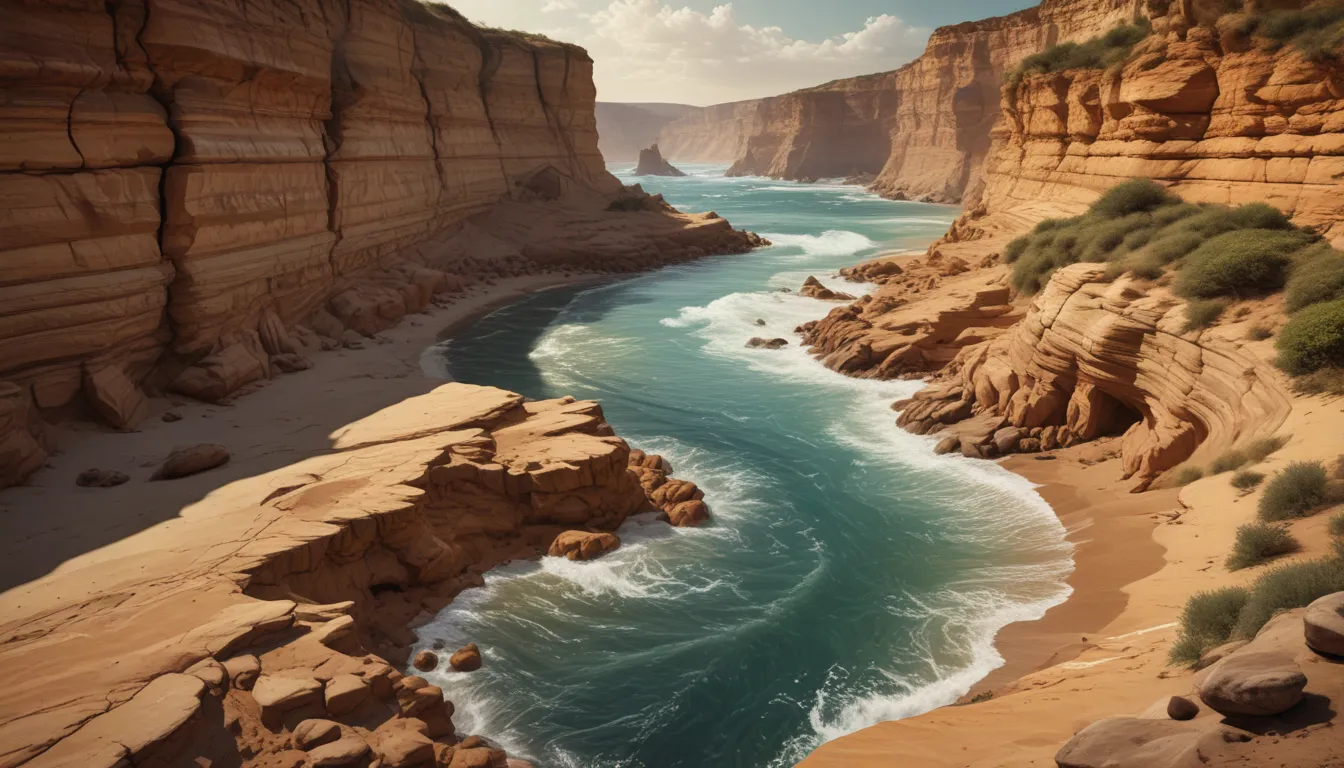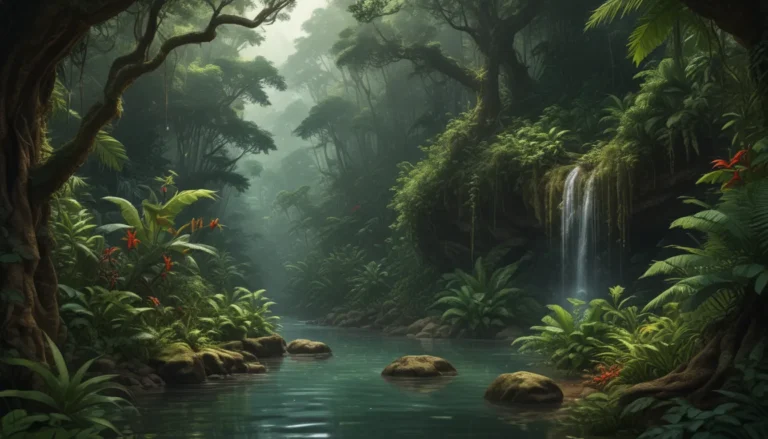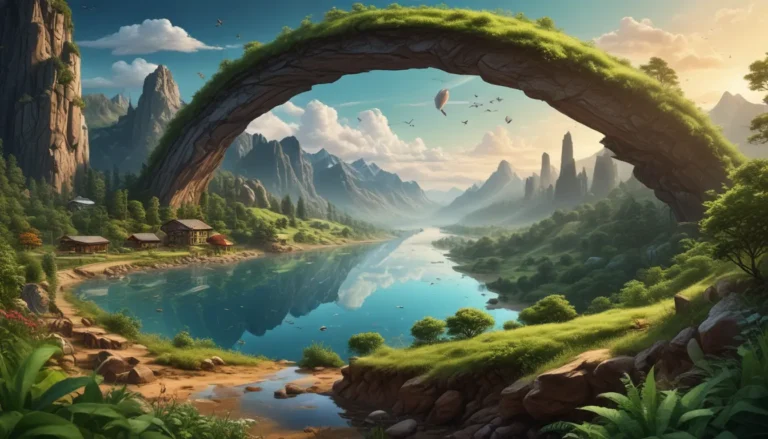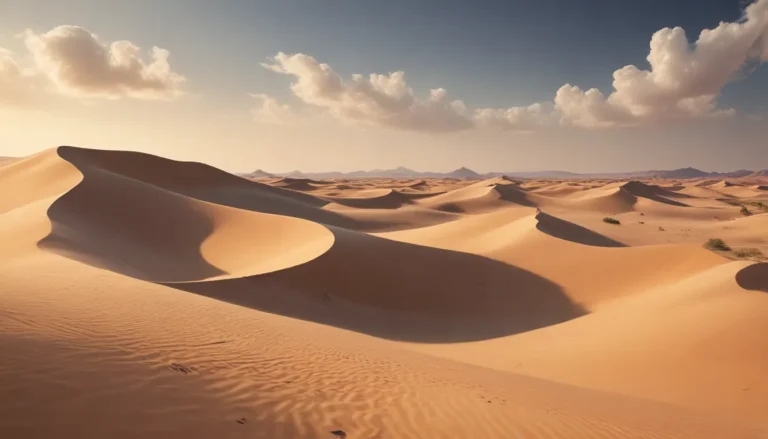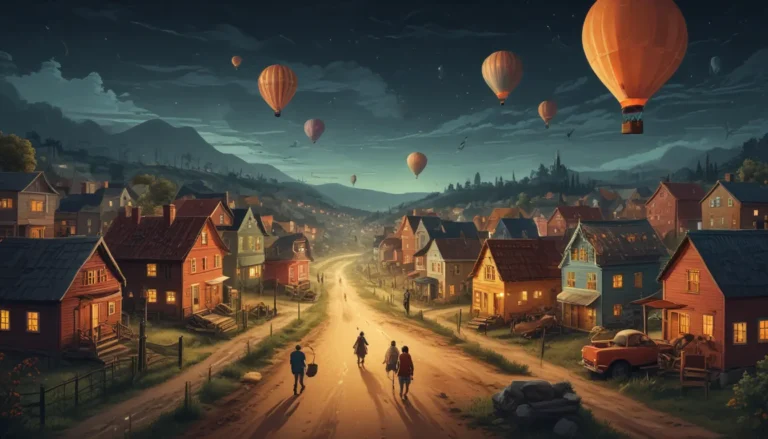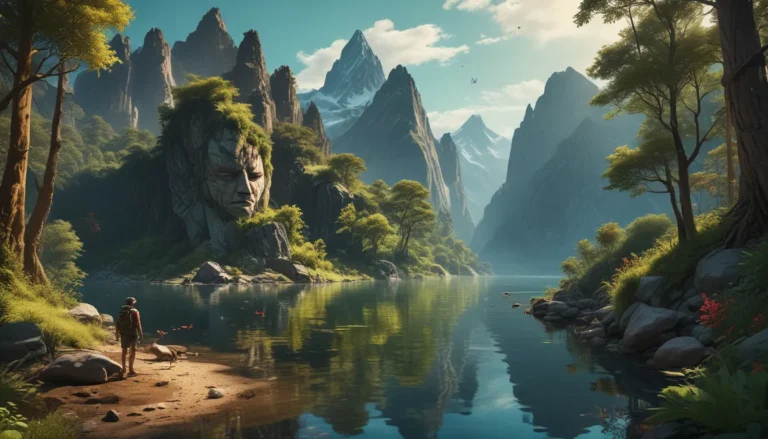A Note About Images: The images used in our articles are for illustration purposes only and may not exactly match the content. They are meant to engage readers, but the text should be relied upon for accurate information.
Erosion, a natural process driven by the forces of wind, water, and ice, has been shaping our planet for millions of years. From the creation of imposing mountains and meandering valleys to the sculpting of picturesque canyons and cliffs, erosion is a captivating phenomenon that plays a crucial role in shaping the Earth’s landscape. In this article, we will embark on a journey through the intriguing world of erosion and unravel 16 astounding facts about this powerful force of nature. We will delve into the various types of erosion, the remarkable features it gives rise to, and the profound impact it has on our environment. So, brace yourself for a fascinating exploration into the wonders of erosion and the awe-inspiring landscapes it has forged.
Unveiling the Forces Behind Erosion
– Erosion is a natural process: Erosion is an intrinsic aspect of our planet’s geological cycles, driven by the perpetual movement of wind, water, and ice. It serves as a sculptor of landscapes, contributing to the formation of mountains, valleys, and coastlines that define our world.
– Water: The Primordial Erosion Catalyst: With its ability to wear away rocks and transport sediment, water stands as the primary agent of erosion. Through the process of water erosion, awe-inspiring natural formations like canyons and waterfalls are meticulously chiseled into existence.
The Marvels of Erosion Across Different Realms
– Winds of Change in Arid Landscapes: In regions plagued by aridity, wind erosion emerges as a potent force capable of shaping the land. Strong gusts can lift and transport sand particles, giving rise to vast deserts and dunes that stretch out endlessly.
– Glacial Expanse and Erosive Might: Glacial erosion unfolds as colossal ice masses known as glaciers traverse the terrain, carving out profound valleys and leaving behind distinct features such as U-shaped valleys and moraines.
Human Interventions and Their Impact on Erosion
– The Human Footprint on Erosion Dynamics: Human activities such as deforestation, mining, and urban sprawl can accelerate erosion processes. The removal of vegetation and alteration of natural landscapes heighten the susceptibility of an area to erosion, altering its ecological balance.
– Coastal Erosion’s Looming Menace: Coastal erosion emerges as a major concern, posing a threat to shorelines and coastal communities. The ceaseless interplay of waves, tides, and currents can trigger beach erosion, leading to land loss and infrastructure damage.
Erosion Unveiled: A Gateway to Geological Spectacles
– Archiving Earth’s Story in Stone: Erosion, over time, unfurls breathtaking geological marvels such as arches, hoodoos, and rock pillars. Serving as nature’s masterpieces, these formations captivate tourists worldwide, showcasing the dynamic artistry of erosion.
– Paleontological Revelations: In a mesmerizing twist, erosion can unearth ancient fossils that have lain concealed for eons. Paleontologists leverage erosion as a tool for discovery, unearthing remnants of bygone life forms and enriching our understanding of history.
The Grand Tapestry Woven by Erosion
– Grand Canyon: A Testament to Erosive Persistence: The Grand Canyon in Arizona stands as a testament to erosion’s enduring power. Over an expanse of millions of years, the Colorado River meticulously carved out this colossal chasm, laying bare layers of rock that narrate Earth’s chronicles.
– Cascading Elegance of Waterfall Erosion: Waterfall erosion materializes as cascading streams of water interact with diverse rock layers, sculpting magnificent waterfalls. Iconic examples like Niagara Falls and Angel Falls epitomize the scenic grandeur born of erosion.
Erosion’s Unveiling of Hidden Histories
– Archaeological Mirage Unveiled: Erosion exerts a profound impact on archaeological sites, progressively revealing artifacts and traces of ancient civilizations. Through erosion’s patient hand, we unearth relics of past eras, gaining poignant glimpses into human history.
– The Dread of Landslides: When erosion compromises slopes and destabilizes soil, it can incite landslides. These abrupt mass movements of rocks and earth pose grave threats to human settlements, underscoring the destructive potential of erosion.
Erosion’s Role in Earth’s Ecological Symphony
– Carbon Ledger of Erosion: By transporting eroded material through rivers and depositing it in oceans, erosion becomes a carbon reservoir. This process plays a pivotal role in the global carbon cycle, influencing climate dynamics and atmospheric carbon dioxide levels.
– Shorelines Forged by Erosive Hands: Waves and currents perpetually reshape coastlines, eroding cliffs and rock formations to birth sandy beaches. These coastal features serve as vital recreational enclaves and habitats for diverse species.
Embracing Mitigation Measures for Sustainable Land Management
– Tackling Erosion’s Onslaught: Erosion poses a formidable challenge to sustainable land management, necessitating robust erosion control strategies. Measures such as terracing, reforestation, and adoption of erosion-resistant agricultural practices are imperative to mitigate further land degradation.
In essence, erosion emerges as a transformative force that sculpts and metamorphoses our planet. From chiseling majestic canyons to revealing ancient relics, erosion’s impact extends beyond aesthetics to pragmatic implications for our world’s sustenance.
A Call to Coexist Harmoniously with Erosion
In conclusion, erosion stands as a dynamic force that etches captivating tales on the Earth’s canvas. By delving into the intricacies of erosion processes and repercussions, we glean insights into the symbiotic interplay of natural elements. Through the advocacy of sustainable land management practices and promotion of erosion control methodologies, we pave the way for a healthier environment for posterity. Let’s embark on a journey of exploration, learning, and harmonious coexistence with this mesmerizing natural phenomenon.
Your Erosion Queries Answered
Q: What causes erosion?
A: Erosion stems from natural agents such as water, wind, ice, and gravity, while human activities like deforestation and improper land use can exacerbate erosion.
Q: How long does erosion take to manifest?
A: Erosion timelines vary based on soil type, climatic conditions, and erosive forces, spanning thousands to millions of years for landscape alterations.
Q: What are the primary types of erosion?
A: Water erosion, wind erosion, ice erosion, and gravity erosion stand as the main erosion variants, each driven by distinctive forces.
Q: What environmental impacts does erosion harbor?
A: Erosion yields both beneficial (creation of natural features) and detrimental effects (soil loss, habitat destruction), impacting plant and animal ecosystems.
Q: How can erosion mitigation be achieved?
A: Adopting measures like vegetation planting, terracing, drainage systems, and sustainable land practices aids in erosion prevention and control.
As we unravel the enigmatic allure of erosion, let’s embrace its transformative narrative while fostering a harmonious coexistence with this formidable force of nature.
